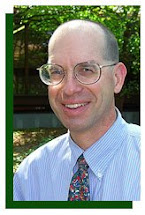 Eighty pounds of sugar. At my home this summer, we've used 80 pounds of sugar so far to keep our four hummingbird feeders filled. Especially just before dark, there have been over 40 hummingbirds at one time flying about the feeders. We enjoy watching them and apparently the feeders have helped keep the hummers productive in the dry weather and close to the house for us to watch.
Eighty pounds of sugar. At my home this summer, we've used 80 pounds of sugar so far to keep our four hummingbird feeders filled. Especially just before dark, there have been over 40 hummingbirds at one time flying about the feeders. We enjoy watching them and apparently the feeders have helped keep the hummers productive in the dry weather and close to the house for us to watch.Is this what Leopold had in mind? In 1933, Aldo Leopold wrote as the first sentence of the first chapter, in his book Game Management, that "Game management is the art of making land produce sustained annual crops of wild game for recreational use."
Supplying food and cover for hummingbirds has produced an annual "crop" and we've done this for several years. Yet feeding hummingbirds is just the tip of a really large iceberg to what is required to accomplish sustainable land management that supports a variety of native plants and animals.
Leopold had a much bigger vision of conservation management. Leopold continues in his book, through another 15 chapters and 391 pages discussing biology, research, the importance of science, and successful techniques before making this statement on page 392, "But it is not merely a supply of game, in the strictly quantitative sense, that is in question. The conservation movement seeks rather to maintain values in which quality and distribution matter quite as much as quantity."
He continues in the same chapter on page 403, "The objective of the game management program is to retain for the average citizen an opportunity to hunt" and "The objective of a conservation program for non-game wild life should be exactly parallel: to retain for the average citizen the opportunity to see, admire and enjoy, and the challenge to understand, the varied forms of birds and mammals indigenous to his state. It implies not only that these forms be kept in existence, but that the greatest possible variety of them exist in each community."
He states on page 405, "There is, in short, a fundamental unity of purpose and method between bird-lovers and sportsmen. Their common task of teaching the public how to modify economic activities for conservation purposes is of infinitely greater importance, and difficulty, than their current differences of opinion over details of legislative and administrative policy."
Social significance of conservation. Leopold concludes in the last four pages "The game manager manipulates animals and vegetation to produce a game crop. This, however, is only a superficial indication of his social significance. What he really labors for is to bring about a new attitude toward the land" and "Herein lies the social significance of game management. It promulgates no doctrine, it simply asks for land and the chance to show that farm, forest, and wild life products can be grown on it, to the mutual advantage of each other, of the landowner, and of the public."
Seventy five years later in Missouri. Today, most Missourians (93 percent), indicate they are interested in Missouri's fish, forests, and wildlife. Thirty-six percent say they fish, and 27 percent say they hunt. Many Missouri households have one or more participants who watch birds and wildlife (72 percent), feed birds and wildlife (64 percent), and observe wildflowers (61 percent).
Even with this level of support and participation, however, surveys and focus groups also provide hints that Missourians are pressed for time to stay knowledgeable and remain in touch with the natural world. A big task of conservation workers is to do exactly what Leopold wrote nearly 75 years ago, which is to "bring about a new attitude toward the land."
I'm not just feeding hummingbirds, I'm participating in a social movement of conservation.
If you want to know more about conservation, you can read about the Department of Conservation's plan for the future of conservation in Missouri in The Next Generation of Conservation. Leopold would be especially pleased with the approach to define wildlife very broadly in the Department's Comprehensive Wildlife Strategy, or any one of the other state wildlife action plans.
You can see some great photographs of wildlife and read about conservation work in the Department's monthly magazine, the Missouri Conservationist, which is free to Missourians who request it.

No comments:
Post a Comment